Huibin Tan
TransMedSeg: A Transferable Semantic Framework for Semi-Supervised Medical Image Segmentation
May 20, 2025Abstract:Semi-supervised learning (SSL) has achieved significant progress in medical image segmentation (SSMIS) through effective utilization of limited labeled data. While current SSL methods for medical images predominantly rely on consistency regularization and pseudo-labeling, they often overlook transferable semantic relationships across different clinical domains and imaging modalities. To address this, we propose TransMedSeg, a novel transferable semantic framework for semi-supervised medical image segmentation. Our approach introduces a Transferable Semantic Augmentation (TSA) module, which implicitly enhances feature representations by aligning domain-invariant semantics through cross-domain distribution matching and intra-domain structural preservation. Specifically, TransMedSeg constructs a unified feature space where teacher network features are adaptively augmented towards student network semantics via a lightweight memory module, enabling implicit semantic transformation without explicit data generation. Interestingly, this augmentation is implicitly realized through an expected transferable cross-entropy loss computed over the augmented teacher distribution. An upper bound of the expected loss is theoretically derived and minimized during training, incurring negligible computational overhead. Extensive experiments on medical image datasets demonstrate that TransMedSeg outperforms existing semi-supervised methods, establishing a new direction for transferable representation learning in medical image analysis.
Dual-stream Feature Augmentation for Domain Generalization
Sep 07, 2024
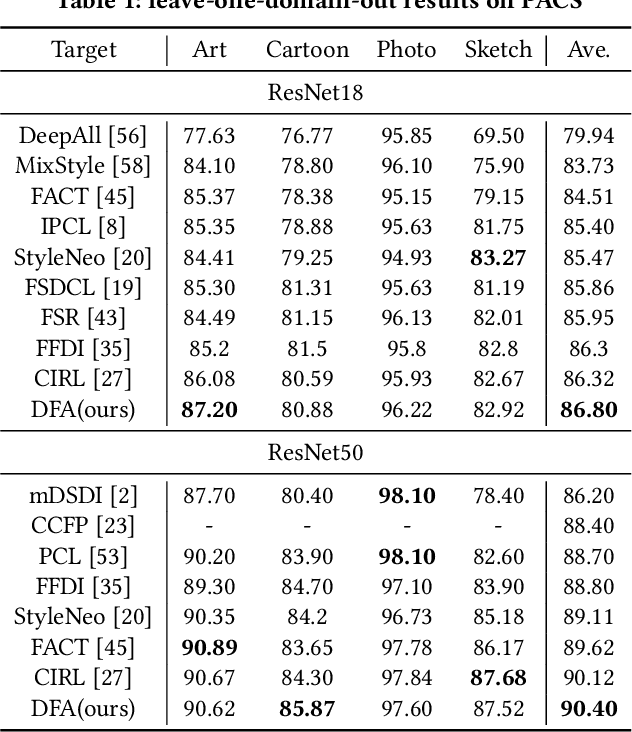

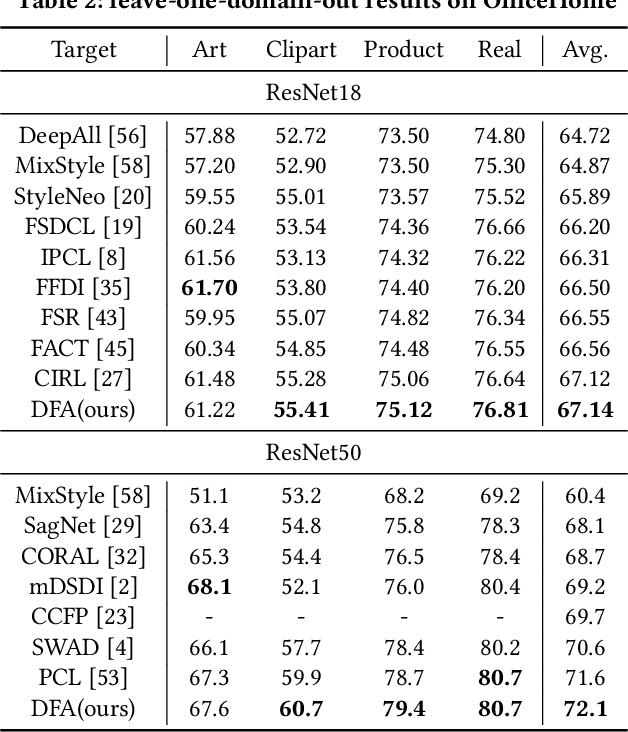
Abstract:Domain generalization (DG) task aims to learn a robust model from source domains that could handle the out-of-distribution (OOD) issue. In order to improve the generalization ability of the model in unseen domains, increasing the diversity of training samples is an effective solution. However, existing augmentation approaches always have some limitations. On the one hand, the augmentation manner in most DG methods is not enough as the model may not see the perturbed features in approximate the worst case due to the randomness, thus the transferability in features could not be fully explored. On the other hand, the causality in discriminative features is not involved in these methods, which harms the generalization ability of model due to the spurious correlations. To address these issues, we propose a Dual-stream Feature Augmentation~(DFA) method by constructing some hard features from two perspectives. Firstly, to improve the transferability, we construct some targeted features with domain related augmentation manner. Through the guidance of uncertainty, some hard cross-domain fictitious features are generated to simulate domain shift. Secondly, to take the causality into consideration, the spurious correlated non-causal information is disentangled by an adversarial mask, then the more discriminative features can be extracted through these hard causal related information. Different from previous fixed synthesizing strategy, the two augmentations are integrated into a unified learnable feature disentangle model. Based on these hard features, contrastive learning is employed to keep the semantic consistency and improve the robustness of the model. Extensive experiments on several datasets demonstrated that our approach could achieve state-of-the-art performance for domain generalization. Our code is available at: https://github.com/alusi123/DFA.
Improving Unsupervised Domain Adaptation by Reducing Bi-level Feature Redundancy
Dec 28, 2020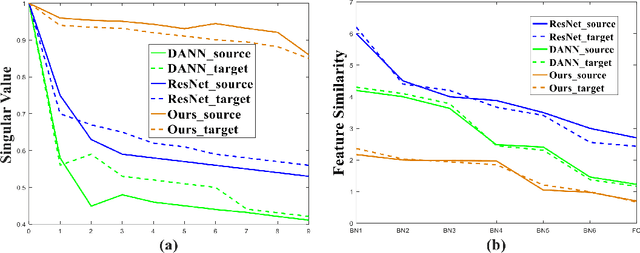
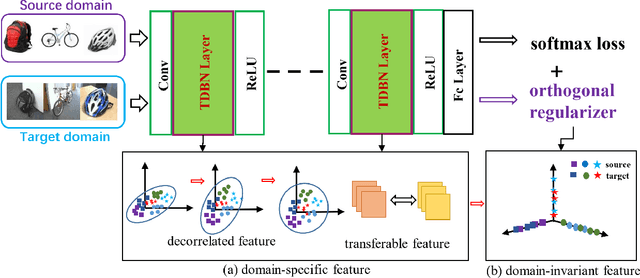
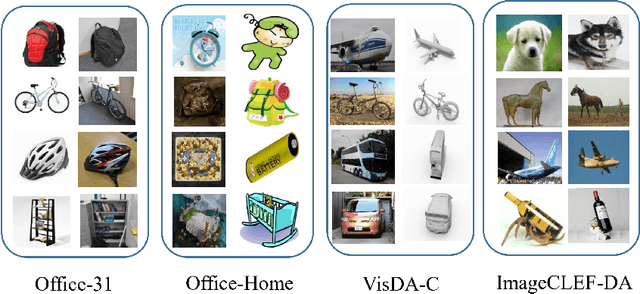

Abstract:Reducing feature redundancy has shown beneficial effects for improving the accuracy of deep learning models, thus it is also indispensable for the models of unsupervised domain adaptation (UDA). Nevertheless, most recent efforts in the field of UDA ignores this point. Moreover, main schemes realizing this in general independent of UDA purely involve a single domain, thus might not be effective for cross-domain tasks. In this paper, we emphasize the significance of reducing feature redundancy for improving UDA in a bi-level way. For the first level, we try to ensure compact domain-specific features with a transferable decorrelated normalization module, which preserves specific domain information whilst easing the side effect of feature redundancy on the sequel domain-invariance. In the second level, domain-invariant feature redundancy caused by domain-shared representation is further mitigated via an alternative brand orthogonality for better generalization. These two novel aspects can be easily plugged into any BN-based backbone neural networks. Specifically, simply applying them to ResNet50 has achieved competitive performance to the state-of-the-arts on five popular benchmarks. Our code will be available at https://github.com/dreamkily/gUDA.
 Add to Chrome
Add to Chrome Add to Firefox
Add to Firefox Add to Edge
Add to Edge